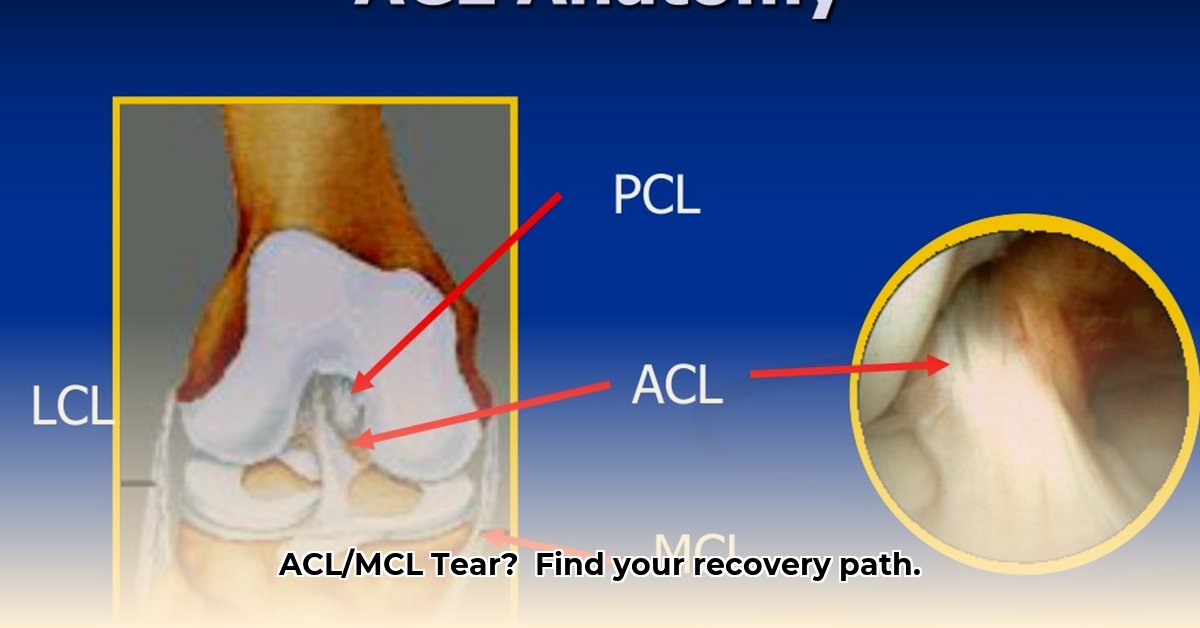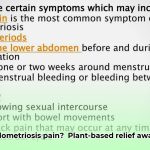Knee pain and instability got you down? You’re not alone. ACL and MCL tears are common knee injuries. Understanding how they differ is key to effective recovery. This guide breaks down these injuries, explaining their causes, symptoms, and treatments in straightforward language, empowering you to make informed healthcare decisions. Whether you’re experiencing a knee issue or looking to prevent one, this article offers valuable insights.
ACL and MCL: Understanding Your Knee Injuries and the Road to Recovery
ACL and MCL tears affect key ligaments essential for knee stability. While both involve knee ligaments, understanding the differences between an ACL and an MCL tear is key to knowing how to best approach recovery. Think of your knee joint as a sophisticated hinge; these ligaments are essential parts that hold everything together. Damage to one significantly affects how well your knee functions. Understanding the function each ligament serves will help you better understand your injury and recovery.
Understanding the Players: ACL and MCL
The anterior cruciate ligament (ACL) is located deep inside your knee and prevents your shinbone (tibia) from sliding too far forward relative to your thighbone (femur). An ACL tear often leads to instability, making it difficult to perform activities that involve pivoting or sudden changes in direction. The medial collateral ligament (MCL) is on the inner side of your knee and resists forces that push your knee inward, preventing excessive inward movement and maintaining proper knee alignment. The location of these ligaments dictates how they typically get injured and how the injuries present.
How These Injuries Happen: The Mechanics of a Tear
ACL tears frequently happen due to sudden, twisting movements, hyperextension, or direct impact, particularly during sports like basketball, soccer, or skiing. Landing awkwardly from a jump or a direct blow to the knee can also cause an ACL tear. MCL tears usually result from a forceful blow to the outside of your knee, such as during a football tackle or a skiing accident, where the knee is forced inwards. The severity of the injury depends on the force of impact, the angle of the blow, and the overall condition of the knee joint.
Recognizing the Signs: Symptoms of ACL and MCL Tears
Both ACL and MCL injuries often cause pain and swelling, but the specific symptoms can vary. Recognizing these differences can help you understand the nature of your injury and seek appropriate medical attention.
ACL Tear Symptoms: Many people report hearing a distinct “pop” at the time of injury. They often experience a sudden feeling of instability, like their knee is “giving way,” especially when trying to pivot or change direction. Walking might become very difficult or even impossible. Swelling usually develops rapidly, within a few hours, and there is frequently significant knee instability. Other symptoms can include a restricted range of motion and pain that worsens with activity.
MCL Tear Symptoms: These generally involve pain and tenderness along the inner side of the knee. Swelling may occur, but is often less intense than with an ACL tear and may develop more gradually. While instability can happen, it’s usually less dramatic than with an ACL injury. Some people might feel a slight pulling sensation in the inner knee. Pain may be exacerbated by pressure applied to the inside of the knee or by attempting to bend the knee inward.
The severity of both injuries is usually graded on a scale of 1 to 3. Grade 1 indicates a mild sprain or stretch; Grade 2 describes a partial tear; Grade 3 describes a complete tear. A doctor will assess your symptoms and conduct a physical examination to make the determination.
Diagnosis: Getting to the Bottom of the Problem
Doctors usually diagnose these injuries through a combination of physical examination, a careful review of your injury history, and imaging studies. A physical exam allows the doctor to assess the range of motion, stability, and tenderness in your knee. Specific tests, such as the Lachman test and anterior drawer test for ACL tears, and the valgus stress test for MCL tears, help evaluate ligament integrity.
Magnetic Resonance Imaging (MRI) scans often play a crucial role. The MRI provides detailed images of the ligaments, allowing doctors to precisely pinpoint the location and extent of the tear. This detailed view is essential for determining the best treatment approach. Your doctor will also consider your age, activity level, and overall health in crafting a plan that suits your individual needs. X-rays may also be taken to rule out any fractures.
Treatment Options: Surgery or Conservative Care?
Treatment options differ depending on the severity of the injury, the specific ligament involved, and your individual circumstances. The goal of treatment is to reduce pain, restore stability, and return you to your previous level of activity.
MCL Tear Treatment: For mild to moderate MCL tears (Grades 1 and 2), conservative treatment is often recommended. This typically involves the RICE protocol (rest, ice, compression, elevation), over-the-counter pain relievers like ibuprofen or naproxen, and physical therapy to strengthen the muscles surrounding the knee and restore normal movement. A hinged knee brace may also be used to provide support and limit movement during the healing process. Surgery for an MCL tear is rare unless the tear is extremely severe (Grade 3) or doesn’t heal with conservative treatment, or if there are other associated knee injuries.
ACL Tear Treatment: ACL tears frequently require surgical intervention, especially for complete tears and for athletes who wish to return to high-impact sports. Surgical reconstruction involves replacing the damaged ligament using a graft, typically taken from another tendon in your leg (such as the hamstring, patellar tendon, or quadriceps tendon) or sometimes even from a donor (allograft). The graft is then secured within the knee joint to restore the integrity of the ligament. This is followed by an intensive rehabilitation program – a critical part of recovery. In some cases, non-surgical management may be considered for individuals with a sedentary lifestyle or those who are not involved in activities that require pivoting or twisting movements.
Recovery: The Journey Back to Full Function
Recovery timelines vary considerably depending on the injury, the treatment approach, and your individual healing response. Full participation and dedication to the rehabilitation plan is key.
MCL Tear Recovery: With conservative management, a full recovery from an MCL tear typically takes 6 to 8 weeks, but can extend to 3 months for higher grade tears. This involves a gradual return to activity, starting with range-of-motion exercises and progressing to strengthening and agility drills. However, every individual is different, and progress depends on factors like the severity of the injury, adherence to the rehabilitation program, and overall health.
ACL Tear Recovery: Recovery from ACL reconstruction surgery is significantly longer. People typically require 6 to 12 months, sometimes even longer, before returning to full activity levels. This extended recovery period reflects the complexities of the surgical procedure and the need for robust rehabilitation to regain full strength and stability. Physical therapy plays a crucial role in helping you regain function and reducing long-term risks such as osteoarthritis. The rehabilitation program typically involves exercises to improve range of motion, strength, balance, and proprioception.
Preventing Future Injuries: Proactive Steps You Can Take
While accidents do happen, there are several proactive steps you can take to reduce your risk of both ACL and MCL tears:
- Muscle Strengthening: A strong set of leg muscles, particularly the quadriceps, hamstrings, and calf muscles, provide essential support to your knee. Regular strength training greatly improves knee stability. Focus on exercises like squats, lunges, hamstring curls, and calf raises.
- Balance and Coordination: Improving your balance and coordination reduces your chances of experiencing sudden, awkward movements that can stress your knee ligaments. Exercises focusing on proprioception (body awareness) are particularly beneficial. Examples include single-leg stands, wobble board exercises, and agility drills.
- Proper Warm-up: Always warm up before engaging in any physical activity. This prepares your muscles and joints for the demands of exercise or sport, reducing the chance of injury. Include dynamic stretching exercises like leg swings, torso twists, and high knees.
- Technique Refinement: Using proper techniques during sports and exercises minimizes the strain on your knees. Seek guidance from a certified professional to ensure you’re using suitable techniques adapted to your body type. This is particularly important for activities that involve pivoting, jumping, and landing.
- Plyometric Training: Incorporate plyometric exercises, such as jump squats and box jumps, to improve explosive power and landing mechanics. This can help you better control your movements and reduce the risk of injury.
- Bracing: In some cases, athletes may benefit from wearing a knee brace during high-risk activities to provide additional support and stability.
Your Next Steps: Seeking Professional Help
If you suspect an ACL or MCL tear, it’s crucial to seek medical attention promptly. Early diagnosis and appropriate treatment significantly increase your chances of regaining full function and reducing long-term complications. Don’t hesitate to consult a doctor, sports medicine physician, or other healthcare professional if you experience any concerning knee pain or instability. The sooner you seek help, the better your chance of a faster and smoother recovery. They can perform a thorough evaluation, order appropriate imaging studies, and develop a personalized treatment plan to help you get back on your feet.
How to differentiate between ACL and MCL tear symptoms for accurate diagnosis
Key Takeaways:
- ACL and MCL tears, while both causing knee pain and instability, have distinct characteristics that can aid in diagnosis.
- Understanding the mechanism of injury helps pinpoint the likely ligament involved.
- Symptom differences, such as the type of instability and the location of pain, provide important clues.
Understanding the Injury Mechanisms
How do these injuries happen? Knowing the mechanics is crucial for how to differentiate between ACL and MCL tear symptoms for accurate diagnosis. An ACL tear typically results from
- Plant-based Diet Colitis Remission: Success Stories - December 18, 2025
- Plant Based Diet Breast Cancer: Research-Based Benefits - December 16, 2025
- Plant-Based Diet Ulcerative Colitis Remission: Proven Benefits - December 15, 2025










